Night 1 - Shooting Stars & Solid Art
Please feel free to continuously click the parenthesized links for some relevant background music.
“Ain’t no love in the heart of the City,” David Coverdale once observed.
Amen, brother. Ain’t no love in the heart of town either.
To me, that song, 1979’s “Ain’t No Love in the Heart of the City”, by Whitesnake, have come to epitomize all the misunderstood artists of the world – producing quality material for decades, only to get their 15 minutes of fame in the sun because of something totally misrepresentative that happens to cater to all the right (wrong) people at the right time.
So many fantastic artists, bands and musicians just pass most of us by, like paper faces on parade, occasionally flaring up like shooting stars in the night as that one song, or that one appearance in the right circumstance, slam dunk them onto the red carpet for an ever so brief moment. Mostly, they just stand there in the flashing light; blinking confusedly against the hail of praise and before the sudden onslaught of attention. This is new to them and they don’t know how to properly capitalize on their newfound fame, to expand upon their art, without losing track of who they are and where they came from. Thus they burn out fast, and then fall softly towards the dark sea, forgotten by one and all, doomed to forever chase that elusive first high that made them supernovas to begin with, not realizing that it was all a fluke fantasy – a lucky round of Russian Roulette – and that they’d be better off returning to their roots and take it from there.
Whitesnake may be a somewhat off-beat example, but it still holds true. The band released most of their best material in the late 70’s and early 80’s, before a poppy re-recording of an old classic song of theirs, “Here I Go Again”, was pumped on MTV, because times had finally caught up with the sign and thusly decided that this was the thing to listen to. People didn’t know the song was more than six years old and originally released on the strong “Saints and Sinners” album back in January of 1982, and neither did they care. Sadly, Whitesnake will always, to most, be that hair band with that ballad – what was it called again – with the chick on the hood of the cars? Nobody remembers their heavy 70’s blues rockers or their somber slow pokes of the early 80’s. Coverdale’s voice was once the very best in rock, and is now mostly tickling people’s gag reflex as they remember making out with Crystal Beth in the Camaro behind the gym in high school with “Is This Love?” slithering out of the speakers like neon green syrup.
The hair band era killed off a lot of great bands that had the fortune/misfortune to gain recognition in that shallow period’s heyday. Badlands, The Black Crowes and Cinderella were all so much better than the clothes they wore and the bands they opened up for. Badlands and Black Crowes, especially, both had that seldom found genuine rock sound that only comes around a few times in every decade. Unfortunately, “real” rock is not supposed to come in the shape of poodle hair-dos and pink spandex, so they were dismissed as Sunset Strip curiosities. When the hair band epoch danced out the door, into a grim and harsh musical wasteland, so did all the bands ever tainted by its glossy shine. Badlands, Whitesnake and the others all spiraled downward like so many autumn leaves falling from an old dying tree.
But for some, the ashes of one man’s death, became the birthplace for another. Easily forgotten Poison guitarist Richie Kotzen, rose like a Phoenix out of the pyre of oblivion and stretched his wings towards the sky. His first real album, “Mother Head’s Family Reunion” was a master class in 70’s fusion rock’n’roll, and he both played and sang like he was born to do nothing else. He has released 16 albums since, each one a pearl in its own right, covering all shades of rock, from blues to jazz to be-bop, and still getting absolutely no accolades from the greater public. America’s best kept singer/songwriter secret rests safe with the MTV-duped and immensely ignorant masses. His album “Change” from 2003 might very well be one of the finest moments in American Rock in the 21st century so far, showcasing a man who has evolved as a composer and musician, able to fully express the ups and downs of life in a way that tugs at your own heart strings without ever getting cheesy or banal – rocking when it’s time to rock, and smoothing things out with a velvet touch when things are slowing down. But you will never know. You are not picking up the pearls life throws before you, because you are happy with the ritual spoon feeding of the swines in front of the TV.
Some of the greatest albums ever released, are albums that snuck in under the radar – flying low on the fumes of self-finance, on a wing and a prayer – and then just settled with the dust at the back of a shelf in a mom and pop store that went belly up a year later. Meanwhile, Best Buy is selling trillions of the new Gwen Stefani for 9.99. The world unhappily trots on, unaware of the buried treasure that is Suede’s “Sci-Fi Lullabies”; the double album they released as a testament to all the great songs that never made the cut to their first three fantastic albums. The two discs are loaded with the most brilliant pop music ever put on tape, and spangled with the very essence of what made Suede so very good in the beginning of their career. “Sci-Fi Lullabies” is the marrow of the bone of 90’s Brit Pop – in the best sense of the analogy. It’s the best moments of Oasis, Pulp, Placebo and the Verve, all rolled into a Ziggy Stardust daydream of clever melodies and soaring arrangements – shining with pure musical genius, in all its raw simplicity.
You don’t find albums like “Sci-Fi Lullabies” these days. Instead, bands put all their scrapped crap (scrapped for a reason, mind you) on their albums as “bonus tracks”, because they know that by track 7 our ADD has gotten the best of us anyway, and the rest of the album could be a series of cats screeching for all we’ll ever know. Real albums are a dying art form. How many bands out there can put together a solid album of 10 songs that all flow as one – like a beast with a life of its own, with no regard to what may, or may not, be played on the radio?
Not many. Both because artist and audience has the attention span of a bowl of chopped liver, and because labels know that solid albums will never sell as much as that one hit single off iTunes.
Solid and original albums…
They still make them, though. Usually they’re made by artists who are so comfortable in their own skins, that taking a chance and realizing a project or a diverting theme comes natural to them. Take Opeth’s “Damnation” for instance. They were always known for their brutal, yet technical, death metal – and then surprised a whole world by releasing the most beautifully written study in musical melancholy ever recorded. “Damnation” sounds like loneliness pressing a fevered forehead against a cool windowpane, looking out at a grey rainy world without hope; the most desolate and sad piece of music you’ll ever have the wonderful pleasure to indulge in. You will wallow in self-pity for the duration of the 40-minute disc, only to be revived into a better world once it’s over. To create worlds like that, states of emotion, out of music – that is something very few artists can do, regardless of genre.
Miles Davis was like that. He was such a wonderful trumpet player, with such a great understanding of his instrument, the textures of music and the machinations of his genius, that he often took wide turns while exploring his forte – coming up with sensational and dramatic recordings that shook the world. He effortlessly swung from albums like “A Kind of Blue” with its soft and cool approach to instrumental jazz, through “Sketches of Spain” with somber Latino trumpets and stirring passion, to the feverdream panic nightmares and voodoo soundscapes of “Bitches Brew”, changing the world of jazz and instrumental music forever. Three solid flowing albums, all created by the same mind, executed with passion and perfection, but sounding so dramatically different next to each other.
When you’re in the record store next, pick up one of the three Miles-albums I mentioned for a wake up call to a musical brilliance, far outshining anything you have experienced thus far. If you get all three, play them in the order I listed them for the ultimate experience. Pour yourself a glass of your favorite scotch or bourbon, or get yourself a nice plate of cheese, olives and bread and a glass of Chianti – and then just let the music work its wonder on your mind, releasing you from the confines of your everyday rut, working its way to the chambers of your heart like a deep massage for the soul.
That, my fellow insomniacs, is what albums used to be all about; a musical journey to take you away to another place – another state of awareness, a place to just be.
Another night passes, without sleep for the wicked and the weary – make the most of it, kids. Put on some good music and float away.
We’ll talk again soon. We'll go more into depth with the solid albums of the world then.

The Gospels
of Grace
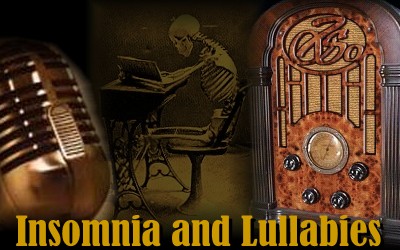
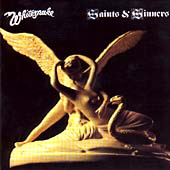
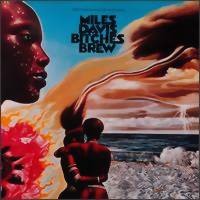
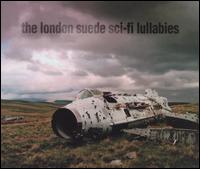
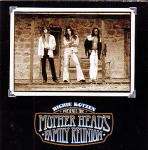
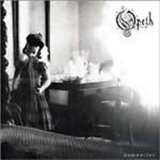
To me there's nothing better when you can't sleep, than listening to some late night dj on the radio. Often it's about topics and people you have never heard about, but in the heart of darkness they all seem like good old friends.
Wait, and read this piece once the house is quiet and midnight has come and gone.

